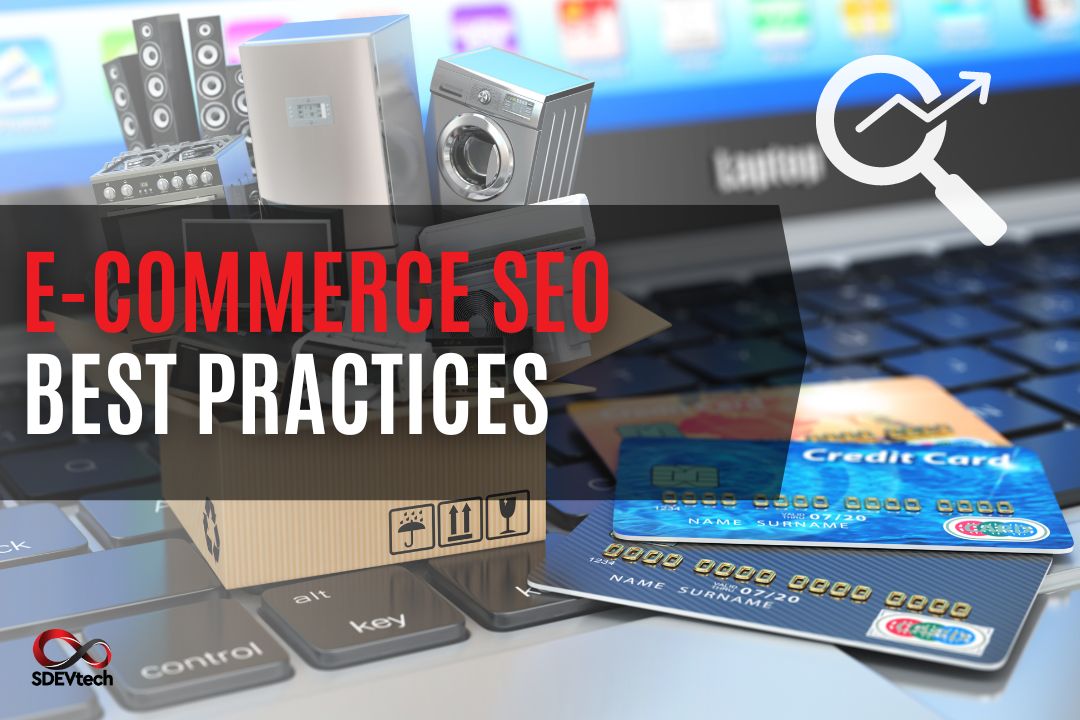In the competitive landscape of e-commerce, distinguishing your business from the multitude of online stores can be a daunting task. Search Engine Optimization (SEO) presents a robust solution for enhancing your online visibility, increasing website traffic, and driving sales. By effectively applying established SEO strategies, e-commerce businesses can significantly improve their online presence and attract a larger customer base.
This article will explore essential SEO techniques tailored for e-commerce, including detailed methods for optimizing product pages, implementing schema markup, and boosting site speed. Each strategy will be supported by real-world examples to demonstrate their practical impact and effectiveness.
1. Optimizing Product Pages for Maximum Impact
Product pages are central to the success of any e-commerce site. These pages are where potential customers evaluate whether to purchase your products, making their optimization critical for both search engine performance and user experience.
Why Product Page Optimization Matters
Optimizing product pages is essential for several reasons:
- Enhanced Search Engine Visibility: Effective optimization ensures that search engines can accurately assess the relevance and quality of your product pages. This increases the likelihood of ranking higher in search results, making it easier for potential customers to find your products.
- Improved User Experience: A well-optimized product page provides a seamless and informative experience for users. This includes clear, engaging content and intuitive navigation, which can significantly boost the chances of conversion by making it easier for customers to make purchasing decisions.
- Increased Conversion Rates: By focusing on key elements such as product titles, descriptions, images, and customer reviews, you create a more compelling and persuasive shopping experience. This not only attracts more visitors but also helps convert them into paying customers.
Key Elements to Optimize
To maximize the effectiveness of your product pages, focus on the following key elements:
- Product Titles and Descriptions: Crafting detailed, keyword-rich titles and descriptions is crucial for both search engine optimization and user engagement. Instead of generic labels like “Cotton T-Shirt,” opt for descriptive and compelling titles such as “Best-Selling Organic Cotton T-Shirt.” Enhance your product descriptions by incorporating relevant keywords and highlighting unique features. This approach not only improves search engine rankings but also provides potential buyers with the information they need to make informed purchasing decisions.
- High-Quality Images and Videos: Visual elements are vital in e-commerce, as they significantly influence customers’ perception of your products. Ensure that your images are high-resolution and optimized with descriptive alt text and file names. Including product videos, such as demonstrations or unboxings, can further engage potential buyers and contribute to better SEO. For instance, a fashion retailer that added 360-degree views of their products saw a 25% increase in the time users spent on product pages, indicating higher engagement and interest.
- Customer Reviews and UGC (User-Generated Content): Customer reviews and user-generated content play a crucial role in building trust and enhancing SEO. Reviews often contain valuable keywords and phrases that can improve your product pages’ relevance in search results. Featuring customer reviews prominently can also enhance credibility and encourage potential buyers to convert. For example, a retailer that prominently displayed customer reviews experienced a 20% increase in organic traffic, driven by the improved trust signals and relevance of their product pages.
2. Implementing Schema Markup for Enhanced Visibility
Schema markup is a powerful tool that enhances how search engines interpret and display your content. By adding schema markup to your e-commerce site, you can improve how your products appear in search results, leading to increased visibility and higher click-through rates.
Understanding Schema Markup
Schema markup is a type of code that provides search engines with additional information about your content. This extra context helps search engines understand the specifics of your products, such as prices, availability, and reviews. As a result, your product listings can appear as rich snippets in search results, which are more visually appealing and informative compared to standard listings. Rich snippets can include elements like star ratings, pricing, and product availability, making your listings stand out and attracting more clicks.
Types of Schema for E-commerce
- Product Schema: This schema type enables search engines to display detailed product information directly in search results. This can include key details such as price, availability, and customer reviews. For example, an online electronics retailer that implemented a product schema saw a 30% increase in click-through rates from search results. The enriched listings provided users with more valuable information at a glance, encouraging more clicks to the product page.
- Review and Rating Schema: Integrating review and rating schema into your product pages allows customer ratings and reviews to appear in search results. This not only helps in building trust with potential customers but also attracts more clicks. A business that utilized a review schema observed a 40% increase in organic traffic. The enhanced visibility of star ratings and reviews in search results helped their products stand out and capture more attention.
Implementation Tips
Implementing schema markup can be straightforward with the right tools and plugins. Here are some practical steps:
- Use Schema Markup Tools: Tools like Google’s Structured Data Markup Helper can assist in adding schema to your web pages. For platforms like WordPress, plugins such as Yoast SEO or Schema Pro offer user-friendly interfaces for adding and managing schema markup without requiring extensive coding knowledge.
- Test Your Implementation: After adding schema markup, it’s crucial to test it to ensure it’s correctly implemented. Use Google’s Rich Results Test tool to verify that your schema is correctly configured and that search engines can properly interpret it. This helps prevent errors that could affect how your content is displayed in search results.
3. Improving Site Speed to Boost SEO and User Experience
Site speed is a crucial element for both SEO and user experience. A fast-loading website not only enhances user satisfaction but also reduces bounce rates, which can positively influence your search engine rankings.
Why Site Speed is a Critical Factor
Site speed is a significant ranking factor for Google, and slower pages can negatively affect your search rankings and conversion rates. A site that loads slowly can lead to higher bounce rates, as users are more likely to leave before the page fully loads. With Google’s mobile-first indexing, site speed is even more critical for mobile users, who expect quick access to content on their smartphones and tablets. Improving site speed can lead to a better user experience, increased engagement, and higher conversion rates.
Steps to Enhance Site Speed
- Image Compression and Lazy Loading: Large images can significantly slow down your site. Compressing images reduces their file size without compromising quality, helping your pages load faster. Implementing lazy loading ensures that images and other media are only loaded when they come into view, further enhancing load times. For instance, an online retailer that optimized their images and employed lazy loading saw a 35% reduction in page load time, leading to improved user satisfaction and engagement.
- Reducing Server Response Time: The speed of your web hosting provider and server can impact your site’s load time. Opt for a reliable hosting provider and consider using a Content Delivery Network (CDN) to distribute your content across multiple servers worldwide. This reduces the distance data must travel and speeds up delivery. A business that upgraded to a premium hosting provider and integrated a CDN saw a 20% improvement in site speed, which contributed to better overall performance.
- Minimizing Redirects and Eliminating Unnecessary Plugins: Excessive redirects can create additional HTTP requests and slow down your site. Streamline your redirects and remove unnecessary plugins that might be impacting performance. An e-commerce site that cleaned up redundant redirects and deactivated unused plugins experienced a 15% increase in conversion rates, attributed to faster load times and a more efficient browsing experience.
Monitoring and Measuring Performance
Regularly monitoring your site’s speed is essential to ensure optimal performance. Use tools such as Google PageSpeed Insights, GTmetrix, and Pingdom to track your site’s speed and performance metrics. These tools provide insights into areas needing improvement and allow you to set up alerts to notify you of performance dips. Proactively addressing performance issues can help maintain a fast-loading site and a positive user experience.
Implementing effective e-commerce SEO strategies—such as optimizing product pages, leveraging schema markup, and improving site speed—can dramatically enhance your online visibility and drive sales growth. Although SEO requires a long-term commitment, the rewards are significant, with notable increases in both traffic and conversion rates. Begin integrating these strategies into your e-commerce operations today, and position your business to excel in the competitive online marketplace.







